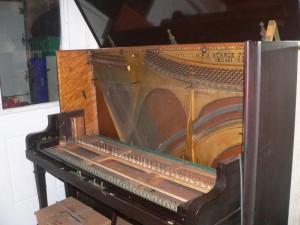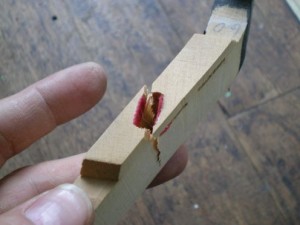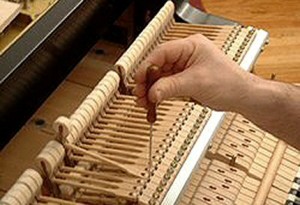Today’s topic will attempt to answer what may seem to most like a silly question, as the answer seems so obvious. However, I get asked this question from time to time, so let’s try to sort it out. Keep in mind that we could write books about each of the three processes, so today we’re going to keep to the basics.
A few months ago, just after I had finished tuning for a client, I was loading my things in my truck when their neighbor greeted me and kindly inquired about what exactly “regulation” meant. He had seen these three words on the side of my truck, Tuning, Repairs, and Regulation, but wasn’t sure what the real differences were.
It was a very good question which gave me “cause for pause”. Not because I didn’t understand what the differences were, of course, but because of the fact that here I was advertising something that people may have to guess what the services were that I was advertising. I could have just as easily printed “adjustments” or something of that nature on the side of my truck. (Well, maybe not! I think I’ll stick with “regulation”).
Anyway, I’ve run across this on several occasions where especially Tuning and Regulation were confused. Really, not too surprising when I think of the times the A/C guy has come to repair my furnace…all I really cared about is that he knew what he was doing, and that it was working properly when he left. So, it makes sense that my piano customers pretty much feel the same way. We come in, greet them, do our thing, and wallah…it sounds good again.
So, the gentleman’s question led me to believe that “Tuning” in many people’s minds is associated with everything involved in the service call, rather than realizing that Tuning refers to one type of process, and that Regulation refers to an altogether different type of process. Let me explain.
Tuning refers to the adjusting of the strings to proper musical pitch, Repairs refer to either fixing what’s broken or replacing parts, and Regulation (or regulating) is moving, bending, turning, shimming, etc. all the parts in the piano to make them work together properly.
Tuning:
Tuning (according to me !) is the act of turning the metal tuning pins in order to either tighten or loosen tension on the strings in order to place them at a correct musical pitch. There are over 200 tuning pins, each attached to a string, on a typical piano, so this is why your technician can take nearly 1.5 – 2 hrs. tuning your piano.
So when you schedule a “tuning”, that is all you are purchasing…so to speak. Granted, I always try to do little things here and there for no extra charge (tighten bench, adjust (regulate) pedals, fix a sticky key…those seemingly small things are things that I, and most tuners, like to do as part of their general tuning service call. A 3-5 min. repair or adjustment doesn’t take a lot of time, they add a great benefit, and it is great for customer relations. However, that is not what the tuning fee is generally for. Specifically, a tuning is primarily for just bringing the piano to pitch (given that it’s close to pitch already….and doesn’t need a significant pitch adjustment…sometimes called a pitch raise or lowering). We’ll save that topic for another time.
Just for fun, consider the fact that if you removed all the keys, action (including hammers, dampers, etc.), pedals, and leave nothing but the strings strung across the plate, that the “harp” could still be tuned…although you couldn’t do descent sounding or stable tuning by just plucking the strings. But TECHNICALLY it could be “tuned” with the action out of the piano, just as you see in the photo below (however, no one ever would…I hope!)
So, you can see that tuning is really just the adjustment of the string’s tension by turning the tuning pins only. Yes we use the keys to make the hammers strike the strings during tuning, but the adjustment has nothing to do with the keys or internal parts other than the tuning pins.
Tuning is a very different process than regulation which is the adjusting of all the other parts of the piano that make up what we call the action and pedal works. Let’s first talk about repairs and then we’ll get to regulation in a bit.
Repairs:
Repairs are generally fixing or replacing what’s broken or damaged. A repair, (according to someone who’s just broke something!) usually means several things…1) it’s going to usually cost something, usually unexpected, 2) it usually is necessary to fix in order for the instrument to function without further damage, 3) it always begs the question…”what caused the damage?” There are lots of reasons parts need repair…neglect, misuse, accident, or just normal wear with age, and 4) smiles from happy customers when the repair is done correctly.
We all know all-to-well that things just don’t last forever, parts break and need repaired or replaced. The good news is that most pianos are built to last a good long time if treated properly. So, again, referring to yesterday’s post, regular visits by your piano tuner can catch things that may need repair before the problem gets worse. A broken hammer, like you see above, may not only fail to work properly, but if not repaired, it’s flopping around in the piano can damage other parts as well.
Examples of common repairs in a piano might be a broken hammer shank that either needs to be mended or replaced, loose glue joints are common on older pianos (or those who have been exposed to extremely low humidity over time), squeaky pedals that need felt replaced or lubricated, broken keys, and the list could go on. We’ll save some of that discussion for another post on repairs someday.
Regulation:
Regulation is one of those words that can mean a number of different things. In law, a regulation is a rule or something to abide by. A regulation sized basketball means the “official” size…the size that an “official” game must use according to the rulebooks. So it is in pianos, well sort of. Regulation basically refers to all the many, many adjustments that can be made throughout the piano to make all the parts function and interact properly. If parts are “in regulation”, or “well regulated” we mean that they are adjusted to function well. If the parts are “out of regulation” or “poorly regulated” we mean that the parts are out of adjustment and may not function at all, or marginal at best. Technicians can change the regulation of your piano to affect how your piano plays and feels to you (heavy touch vs. light touch, loud vs. softer, clickety-clackety sounding parts (bad) vs. quiet and smoothly functioning parts (good)). Many things can be regulated in your piano, and over time, they will need to be.
Note: Broken parts cannot be adjusted or regulated to other parts because they must first be repaired. That being said, many adjustments cannot be made, at least not well, until the piano is at least in good repair.
So, why do we use the word Regulation when referring to the adjustments in the piano. I think it’s because it sounds more sophisticated! Well, maybe not. I believe it is really referring to the fact that a piano is designed to function a certain way, and for that to happen, all the parts must be at certain distances from each other, so that when they are moved, they will engage the other part at the correct spot. When a piano is built at the factory, it is built to a designed plan with certain specifications. Specifications are numbers, distances, tolerances, or whatever you want to call them, that they have decided work best for a particular piano. They are saying that for this piano to work properly, all these adjustments need to be made “just so…” (the rules, for that piano and how it works best). Now, over time, felt wears, hammers get filed down to shape them better, wood swells and shrinks, thus moving the screw adjustments that were once tight in the wood. NOW, the adjustments are not according to regulation (the rules for that piano regarding where those parts need to be to function correctly). So, it is the technician’s job to “Regulate” the piano, or in other words, systematically place all those parts back in regulation (or proper adjustment). There are some regulation process that can be done in a couple hours that will help to improve your piano’s playability, but to properly regulate a piano, it can take between 10-15 hours. It can very tedious work, but the musical payoff is well worth it.
Just for the record, since my fellow technicians are biting their tongue right now wanting to say this,…the factory specifications are just a guideline for the technician, and what actually works best for a particular piano may be slightly different from the “rule”, so to speak. Your technician is trained to make it function properly.
Here’s a little example that might help with understanding the need for repairs and regulation, and in that order. Suppose you played baseball. Picture yourself selecting a bat, stepping up to bat, you stand slightly outside of the batters box, you hold the bat incorrectly (grain going the wrong way), you hold your hands the wrong way on the bat, here comes the pitch. As you swing, you have to reach in to connect with the ball, your momentum is interrupted because of your awkward stance, and the ball doesn’t hit the sweet spot of the bat, and since the grain was the wrong direction, the bat breaks.
Now, let’s look at the situation. We know the bat will HAVE to be replaced (repair won’t do in this case) before going on, but why did it break in the first place? You weren’t standing according to “regulation”, what we know works. So, by “adjusting” your stance, and adjusting the hold on the bat so the ball would hit the sweet spot, all of that could have been avoided. With a new bat and the proper stance, you are ready to hit that home run.
At some point all analogies fall apart, but I think you get the picture, that repairs must be done before regulation will do any good, and at the same time, proper regulation of your piano can prevent many unnecessary problems in the piano that can lead to costly repairs.
So, in summary: Tuning is the adjusting of the strings to proper musical pitch, Repairs are fixing what’s broken or replacing parts, and Regulation (or regulating) is moving, bending, turning, shimming, etc. all the parts in the piano to make them work together properly.
If you enjoy what’s here or want my take on a particular topic, please let me know. You can subscribe to my blog at the top right of your screen.
Until next time…make a joyful noise!


